Artist Interview with lyricist and composer Ana Vidina Hernández
Navigating your Hermit year with Intuition, Patience and Trust
Light up the lantern of your inner eye and grab your sturdiest wizard staff—2025 (our numerologically determined “Hermit year”) calls us to walk uncertain terrain into unknown territory. Maps are outdated, plans defunct. We must rely on intuition to guide us, but parsing the difference between inner-knowing and habitual response isn’t always easy. It takes practice, patience and trust.
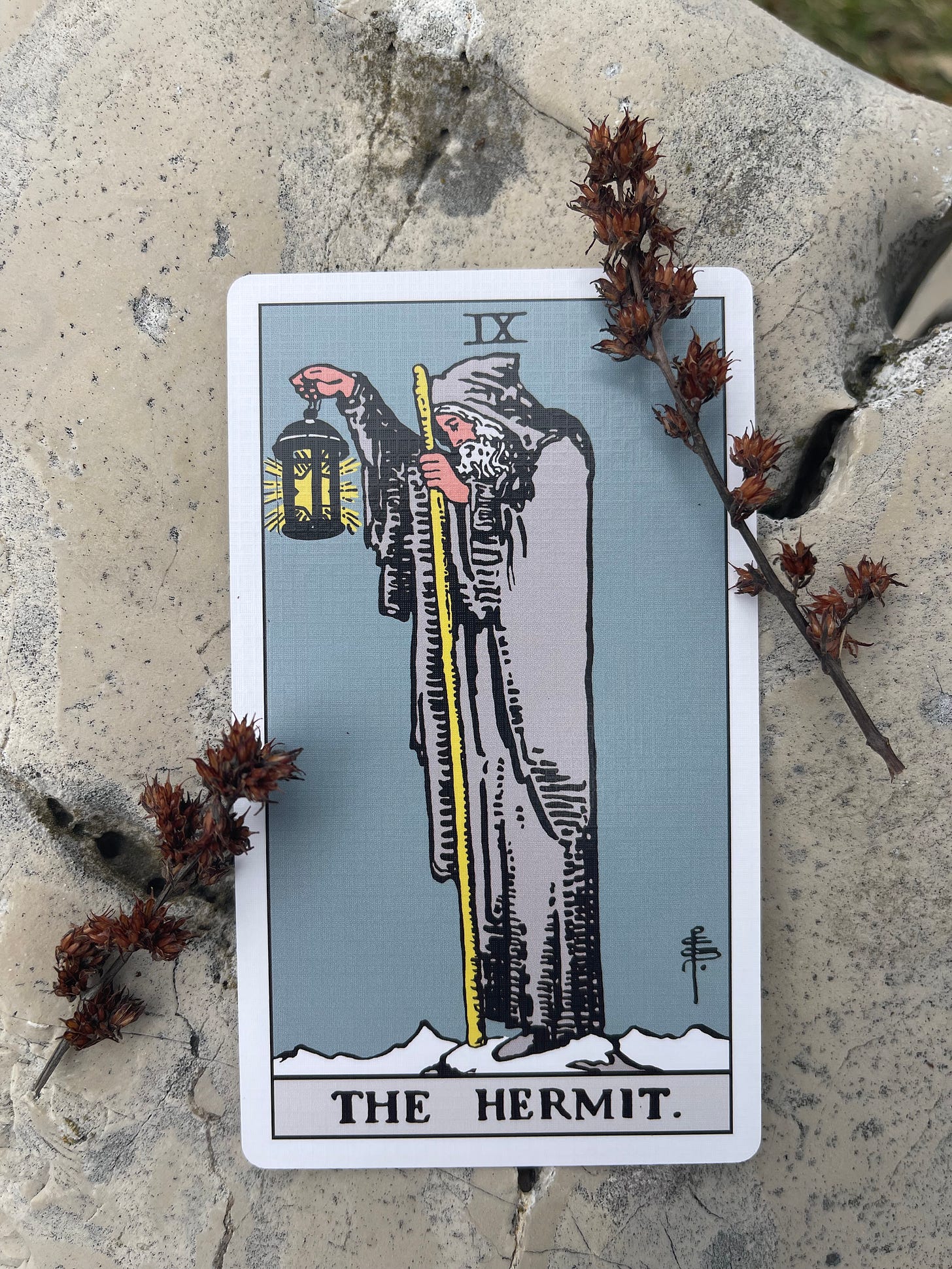
Luckily we're not alone. Fellow searchers are out here in the darkness, cleaving a way through confusion with their light.
One such lantern-bearer, is creative polymath Ana Vidina Hernández.
When I asked Ana, a musician, composer, writer, artist and social worker, to chat with me over lunch about her creative process, I had no idea how closely her personal story would mirror the archetypal experience of the Hermit, but (as is so often the case with creative magic) energies aligned. You know that saying, when the student is ready, the teacher appears? It was a bit like that.
We had arranged to meet at Opa!, the Greek place I love for its proliferate evil-eye decor and reliable seating. It’s only downside is the South Lamar traffic flanking its front patio like a shark-infested moat. Just navigating my way into the parking lot felt like a win that week, as I was still deep within my mid-January funk. Like me, the coffee shop seemed not to have emerged from its holi-daze. A line of flat, red Christmas stockings hung limp from the ceiling; in the corner, the twinkle of a tinsel tree competed with the strobe effect of sun on windshields flashing outside.
Then Ana appeared, adding the beam of her own bright smile beneath a poor-boy hat to the scene. She seemed to carry the assurance that all of this was right on time. And as we settled into a quiet corner table, I got the sense that she was right.
Ana began to tell me about her time as a social worker and the all-too-common burnout she experienced post-graduate school. She had thrown herself whole-heartedly into the field, completing a secondary degree, and beginning her own non-profit program to support immigrant families in Texas. The work was meaningful, helping to bring a trauma-informed lens to immigration law and its practice, but she was so busy, she said, that her nervous system suffered near-constant disregulation. It wasn’t until the pandemic hit and she was forced to scale back on her work, that she began to experiment with her own energetic rhythms more intentionally. During that time, she picked up Julia Cameron’s The Artist’s Way, prompting a profound personal transformation.
Cameron’s book, subtitled A Spiritual Path to Higher Creativity, is well known among artists for assignments like morning pages and artist dates. It outlines a twelve-week process to help blocked creatives reconnect with the deep wells of their own insight, mostly through play and low-stakes experimentation. Working through the activities in the book strengthened Ana's resolve to change her situation dramatically—she had already planned to step down from her position at the program she helped to create and commit herself to a several-months-long, self-funded sabbatical. The book helped her chart the path forward. Serendipitously, her completion of Cameron’s twelve-week program (for the second time), coincided with her last week at work.
Enter the Hermit.
For months Ana made no demands of herself outside of meeting her basic needs and following her creative whims. “I did legos,” she tells me, eyes twinkling. “I took a road trip.” Her body tips back in her chair, as though the memory of those weeks emits a physical force, a cleansing breeze that lifts a weight from her shoulders.
“That time off was the best part of my whole life,” she grins.
Then she laughs: “I didn’t make a list for like 4 months!” This was such a far cry from the days when each of her multiple projects warranted its own color-coded notebook full of carefully prioritized to-dos. “Of course I do make lists now,” she adds. “I do have to remember things.” But it’s different.
The gift of this self-designed hermitage allowed Ana to reset her nervous system in away that felt impossible under the pressure of all that doing.
Of course, this kind of retreat isn’t accessible to everyone, at least not to the same degree, Ana acknowledges. “You can look at the injustice in the world and you can look at how it can be a privilege to have these things. To have time to adjust your schedule. All of that’s true. But it doesn’t mean that it’s not something you should think about.”
Ana sites artist and activist Tricia Hersey’s work on "Rest as Resistance” and the Nap Ministry as a source of inspiration.
“For me the power of the Nap Ministry is [the reminder that] there’s no financial requirement for self-compassionate rest. It’s a human right…and rest is an act of resistance. Community care is an act of resistance….and art…is some of the best community care.”
Hersey began her own resistance movement against grind culture as inspired by her grandmother, a black woman with multiple jobs helping to raise grandchildren. Despite labor-intensive demands of work and caregiving, Hersey’s grandmother took an hour everyday to sit on the sofa and meditate, young ones playing around her. Every time that we create pockets of time devoted to rest, Hersey advocates, we reclaim our human dignity. Our right to rest as spiritual beings. (See Rest as Resistance).
Ana’s retreat from work alongside the revival of creative play that she’d kicked off with The Artist’s Way, helped her to reimagine what kind of work she wanted to put into the world and how she wanted to do it. “I wanted to build a business where I could bring my whole self.” So in 2023, Ana launched her creative consulting practice, Vidina Visions Consulting, helping other folks to take their intuitive ‘nudges’ and follow them toward the cultivation of their Self-aligned, authentic lives.
Of course, it wasn’t a smooth and easy path forward. Two months after taking the risk to launch her business, her partner had his hours severely cut in a round of nation-wide tech lay-offs. Ana ultimately had to seek out a full-time position, but it was with a different set of personal parameters in place. She was able to schedule her work week around her own energy flow and to continue to build her own business. Since July of last year, she has been back to consulting full-time. Through her business she supports individual clients, her “Take up Space” groups, as well as organizations in the non-profit sector where she had worked in the past—only now she incorporates the creative, self-intuitive approach that she continued to hone in her personal practice.
“It wasn’t like: oh I did the Artist’s Way and now I’m intuitive,” she explains. “This is all the peeling back of the onion that I was doing.”
In fact, her transformation via the Artist’s Way was meaningfully amplified by earlier work she had undergone in developing an intuitive eating practice. “It was like: ok, first I reconnected with my body, I didn’t hate my body anymore…a different way [was] possible.” Then, she embarked on a Marie Kondo-led transformation of her living space in tandem with her partner, who, as a half-Japanese American, resonated with the Shinto foundation of Kondo’s organizational method. Shintoism, Ana explains, is based in the idea that “every object has a spirit—is alive. And framing [personal organization] as your relationship with the objects in your life was totally different” for her; particularly given the severe hoarding situation in which she had grown up.
Ana brings this up, she explains, because the basis of Kondo’s method, which relies on the process of considering whether or not to keep individual belongings by weighing one’s internal response to that object, is the practical application of intuition. “Thinking about taking every object I own and holding it in my hands and deciding whether it brings me joy or not? It took me a really long time to be at a place where that didn’t feel threatening.” But in time, she found the practice healing. It allowed her to develop “the ability to inhabit” her space and “feel ownership” over her place in it.
All of these practices kept guiding Ana gently back to her own intuitive heart, which she likens to the therapeutic concept of Self-Energy in the psychological framework of Internal Family Systems. By this model, each of us has a guiding, benevolent consciousness, the Self, that works in tandem with our “parts,” these being patterns of ours that develop out of personal experiences (good and bad) and which we call upon to help us navigate our lives. The Self is the higher-knowing, the calm, creative, curious consciousness that, ideally, helps us delegate among our parts.
It’s not a stretch for me to picture this Self as the wise elder depicted in the Hermit card, carrying the guiding light of our soul’s purpose, illuminating the parts of us that so often operate in shadow.
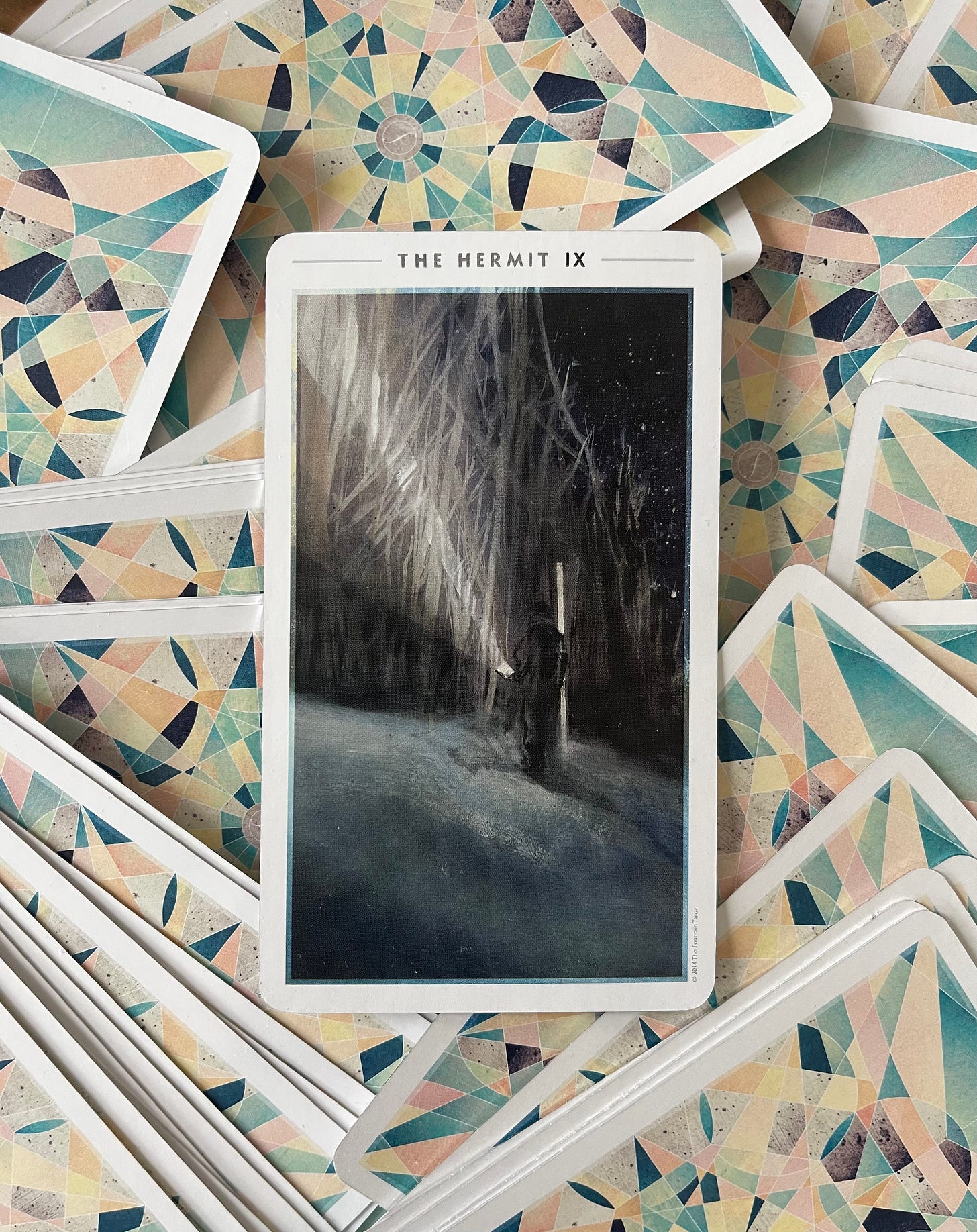
Already, 2025 seems poised to confront us with the exiles of our unconscious, our individual and collective responses to uncertainty, grief and fear. If (as I believe) creative play offers a means of acquainting ourselves with our parts and practicing what it feels like to act from our Self (rather than our reactive patterns) then I want to know how to keep doing it—even when it’s hard. And Ana, as the composer and lyricist of four musicals, knows how to keep a project going.
“Do something for your artist every day,” Ana advises. “I used to write letters to my inner artist child or from my inner artist child. And I think that builds the intuition muscle.” But it can be anything. Something as small as drinking tea from a favorite cup, she says.
“It’s like a mindfulness practice,” I note. “But with an added element. I observe things as they are, but I’m also asking how I relate to them, how I might be able to change them.”
How am I a co-creator of this moment?
“Exactly,” Ana says. She explains how she has learned to keep herself motivated by centering your own interests. When writing, Ana says, “I ask myself what is the most fun thing that could happen [in my story] right now. What is the most me thing that could happen.” Additionally, she sets up her space for experimentation, with a wide, open table and enticing supplies. Ultimately, she says: “If a project isn’t feeling playful, I usually do a different project.”
“Maybe it’s like a sign,” I say. “That it needs to rest.”
“Yes!” Ana draws out the affirmation. “We need to rest and projects need to rest! I hadn’t put it that way before, but I like that…I also find that I do really well with prompting,” she says. She’ll leave active work on a project with a specific question in mind, about a character or a song, and “prompt” her brain to work on it subconsciously. Throughout the day, often in the shower, she’ll get little insights around her question that arise in moments of relaxation and she’ll take notes when necessary. Several of her projects, she tells me, even originated from the subconscious, making their way to her through dreams.
This way of working takes a lot of trust and patience, but for someone like Ana, who describes herself as “super autonomous,” it works better than the demands of “accountability,” on which artists so often rely. “It’s really freeing to take the pressure off,” Ana says, and it helps you to develop “a different way to approach asking questions and finding answers.”
It’s an hour or so into our conversation and I can envision how such a practice must have helped to cultivate the warmth that Ana radiates—her easy laughter and sparkling intellect. There is a joy and a delight in imagining the path forward not as a rigid mode of grinding onward, but a wide field of possibility and surprise.
“I always say that when there’s only two options, that’s always a lie…” Ana says. “There’s always a third option. When you look for the third option…in my reasoning that means there’s a fourth and a fifth and…infinite options. You almost always find something that you didn’t expect.”
This is a way of moving forward that feels sustainable, enjoyable, and free—but how does it stand up to the weightiness of these times?
“I think about the things that made my life better growing up—and it’s all art,” Ana says. “I’ve talked to people who struggle, especially people who come from a justice background, people who are in social work, too, and they struggle to validate their desire to create art…And I’ve just been like: what were the things that changed your life growing up? What were the things that made it bearable? What were the things that made it better?
“And it’s the books you read and the music you listened to and [how] it described your reality or it gave you an escape, or whatever it was. [Art] makes such a huge impact on our lives that for us to discount it so much, for us to undervalue it, for us to not think that it’s a valid contribution to the world that deserves time and money and space…that’s bananas!”
“It’s quite oppressive,” I whisper.
“Yes!” Ana says; her voice strong, steady, practiced. “And art often speaks truth. So there’s reason for it to be oppressed.”
This year may or may not offer us long swaths of time and space to devote to our creative practices. We may or may not be able to carve out a Hermit’s cave where we can sink into serenity and calm. Like the wanderer on the tarot card, the labor of the journey draws us onward. Yet even the smallest actions, the subtlest shifts in attention, can connect us with our inner Wise One.
Light the lanterns. Forge the path. And rest. Don’t forget to rest.
You can connect with
, check out her poetry, listen to demos from her musicals, buy prints of her art and learn about working with her at:https://www.vidinavisionsconsulting.com
On Instagram you can follow both Ana’s business: @vidinavisionsconsulting https://www.instagram.com/vidinavisionsconsulting/
And her art: @vidinavisions https://www.instagram.com/vidinavisions/
I’m grateful to be able to create this newsletter for free. Yet if you feel called to participate in an energy exchange based on what you’ve read here, please consider donating to one of the following non-profit organizations recommended by Ana:
Rooted Texas: An organization supporting undocumented and immigrant students at UT Austin who lost the Monarch Program in 2024 as a direct result of implementing SB 17. https://www.gofundme.com/f/ut-austin-immigrant-student-fund
Casa Marianella: An Austin shelter for immigrants that also offers access to legal and medical resources, food, clothing, English classes, and other resources. https://www.casamarianella.org
American Gateways: An immigration legal nonprofit https://www.americangateways.org


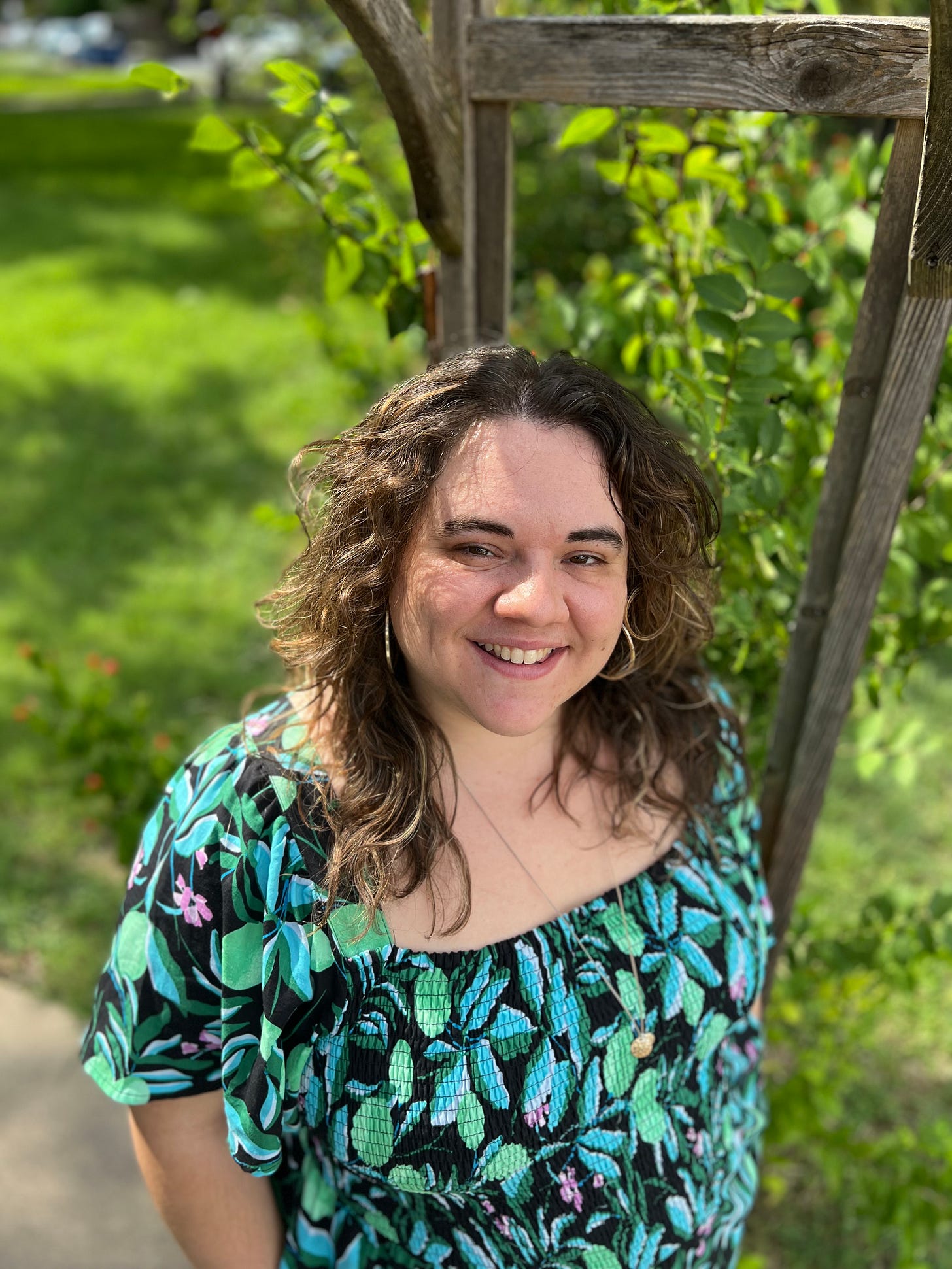

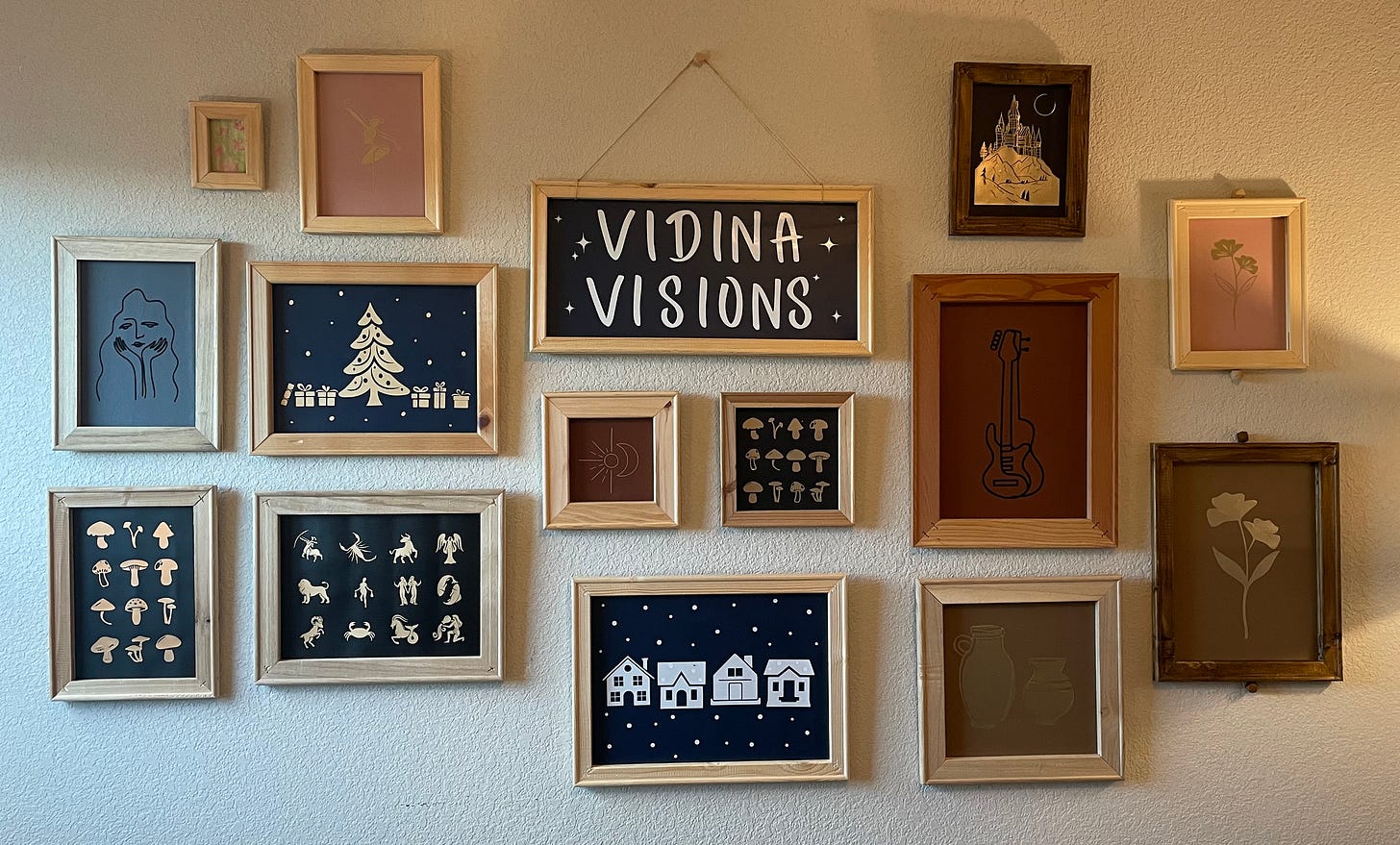

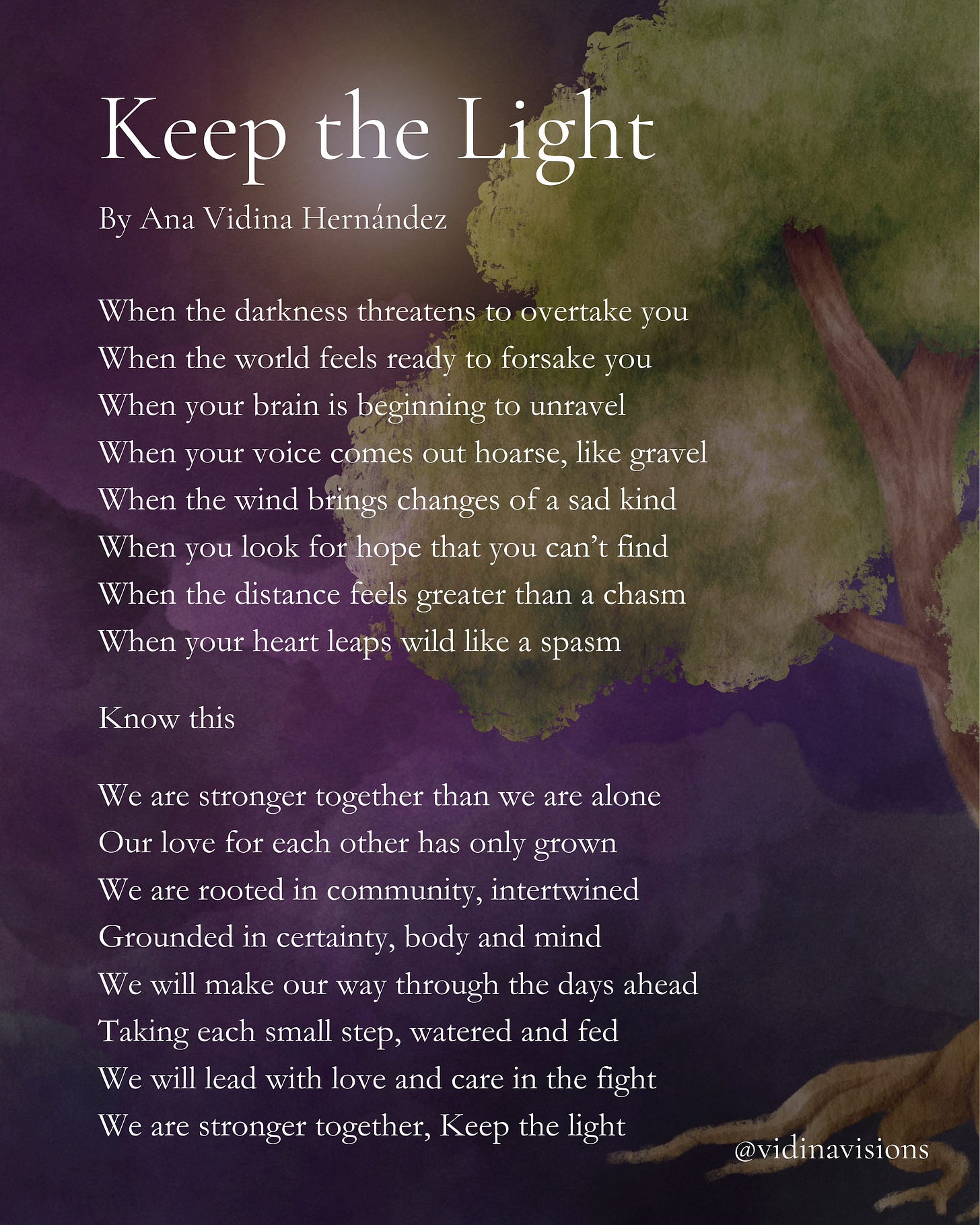
Keep the Light would make wonderful chalice lighting words! Thank you for sharing your words and stories. Love you!